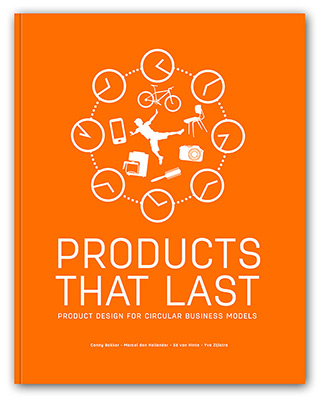
Phone:
+44(0)1935 812447
Mobile:
+44(0)7970 025924
Email:
jb@jb-ld.co.uk

Phone:
+44(0)1935 812447
Mobile:
+44(0)7970 025924
Email:
jb@jb-ld.co.uk

04-03-2015
 I was looking forward to a real upbeat ending to the final part of Products That Last – until I’d finished reading it; by which time I was completely confused and felt that I must have picked up the wrong book. So I re-read the final part, which is all about ‘What Product Design Strategies Apply To Your Product’ by the way – and that should be all good stuff, for designers, makers and specifiers alike.
I was looking forward to a real upbeat ending to the final part of Products That Last – until I’d finished reading it; by which time I was completely confused and felt that I must have picked up the wrong book. So I re-read the final part, which is all about ‘What Product Design Strategies Apply To Your Product’ by the way – and that should be all good stuff, for designers, makers and specifiers alike.
After re-reading the damned thing I wasn’t so much confused – just frustrated and REALLY IRRITATED by the assertions and the assumptions being made and - to put it simply, the general content. So I’ve just read it again to see what it is that I’ve missed, and I’ve come to the conclusion that I haven’t missed anything. But it’s a textual version of a Hall of Mirrors; things aren’t what they seem – though some of the things that look funny are just plain hilarious.
The section opens with a piece headlined ‘Circular Design’ – which is why we all came to the party in the first place. But in the context of what follows, it appears that Circular Design isn’t really Circular Design it’s the Principle of Design – or ‘Why We Shouldn’t Throw Things Away’. Classic sustainable thinking is accused of lacking the perspective of ‘maintaining value over time’ whereas the author propagates the idea of The Principle of Sturdiness.
No – that’s not good enough. Circular Design sits within the precepts of sustainable thinking but it certainly doesn’t replace it. Sustainable design is built on the foundation of ‘sturdiness’ and the Cradle-to-Cradle concept that grew from sustainable materials husbandry requires that components be retained for as long as possible within the Technical Nutrient cycle – and that’s not just about smelting down aluminium – that is also about retaining component use wherever it’s possible to do so.
The author offers us six strategies for extending product lifetime and I settled down to read the six reasons why Things Shouldn’t Get Thrown Away’. Here’s the précis:
1. don’t throw it away because you’ve fallen in love with it – which in the mind of our author relates more to ‘personalising’ a product (make your own scratches on a lamp shade anyone?) rather than any real sense of engagement with a product or objet that exists for you on a truly emotional level (my father’s fob watch – my mother-in-law’s tea caddy)
2. don’t throw it away because its been built really strongly and ain’t broke yet. Well – yes, and I’d expect something like Product Durability to focus in on component resilience and a product’s ability to survive simply because there’s no justification for getting rid of it. There – you’ve learned more from me in one sentence than this section offers.
And here’s a real whinge: there’s not much concrete in this book, so when a probability equation gets offered up it sticks out like a mis-placed apostrophe. My problem is that I’m not a mathematician and I don’t know any (though a brother-in-law who’s a university professor might reduce the Degrees of Separation) but I stopped dead at this idea: a Part has three components, and each of those components has a different reliability factor: 20%, 40% 60%. We’re then told that the overall reliability of the Part is those three numbers multiplied . . . 4.8%. Can that be correct? It just feels so wrong. Are we saying that a chain with ten links, each of which has a reliability factor of 90% has an overall reliability of only 35%? That sounds rubbish; on those kind of figures there’s not a chain in the world that works – is there? Will someone out there put me right, please? I'm always happy to be wrong.
3. And what do we have to say about Standardisation of Parts and Compatibility? The author offers up a diatribe on computer dongles and internet typeface standards.
It was at this point that an ‘ah-hah!’ went off in my head. This is not really about writing for the real world; this is the world of the university thesis and abstract thinking, rather than exploring the real world of standards and compatibility.
The lighting industry has long understood about Standards and Compatibility; it’s the way that we’ve kept our world alight for the past century, with standard types of light sources in compatible fixtures. Its also of vital importance to us today because the Crazy World of Microelectronics has decided that Standards and Compatibility is boring and old-fashioned, which is why our newly powered LED world is such an arse-ache.
4. The section on Maintenance and Repair includes the Quote of the Book; “A smartphone is really nothing but a battery with a lot of features”. No – its not.
What it is, is a complex product where the component likely to fail first is the battery – end of story. We don’t need this kind of hyperbole; it’s a serious subject so get with the programme.
And, for our more parochial reader, this section references a graduation product that took place at Philips Research. Concerned that component replacement was a bit tricky, the student “designed a concept for a new ‘future-proof’ luminaire, allowing for easy replacement of LEDs by more efficient ones” recommending “an ecosystem of modules”. Like I say – hyperbole disguising itself as something clever, rather than something we’ve been doing with light sources since the days of Mr Swann and Mr Edison, a lo-o-o-o-o-ng time ago.
5. In my last review I talked about my grandad’s spade, if you remember (new handle and blade – but grandad’s spade, nonetheless). On that basis, a section on Upgradability and Adaptability had a lot of human experience to draw on because its what we’ve been doing with our belongings since we skinned our first buffalo. But – again – no; that’s not where we’re going, despite the UpCycle revolution that’s going on all around us (old, redundant, tables and chairs being painted in fancy patterns and remarketed in craft fairs). Instead we get some daftness about ‘digital smartness’ and adaptive technology.
It kicks off with a warning to the nascent interactive kitchen appliance designer to be aware of parallel developments in food science that may render their design redundant. Yes – and the last kitchen appliance we bought was a new colander with smaller holes than the one we already had, so that we could replace the sieve that kept getting clogged up with the slimy stuff. It makes washing-up so much easier. This is the real world, my friends!
6. At first sight, the final section seems to suggest that, eventually, all good things must come to an end (ah, maybe THIS is about the Cradle-to-Cradle side of Circular Design. Whoops, no read that title again . . . ‘Dis- and Reassembly’.
So this is really about taking something apart so that you can put it together again – like the Kalashnikov AK47, which is an exemplar product of this type, apparently. Unlike IKEA wardrobes. Well, if you’re going to aim an AK47 at anything, I suggest that IKEA is not a good example. My house is full of BILLY shelving and various other IKEA stalwarts, all of which have been taken apart, moved around the house, put back together again, taken apart again and actually moved to other houses – and they are still standing up to the strain.
And while I’m at it, there’s a Bieffe drawing board in the corner of my office that’s been with me for thirty years; that’s five different houses and a quantum shift from drawing by hand (remember that) to CAD. Its not the focal point of all my creative effort these days, but there is no questioning its functionability, nor its right to he described as a Product That Has Lasted.
Its not the focal point of all my creative effort these days, but there is no questioning its functionability, nor its right to he described as a Product That Has Lasted.
So by now I’m tired of abstruse examples of things that I either don’t care about or will never see and I'm annoyed with the lazy stereotyping of everyday products that actually do the things the ‘Products That Last’ are meant to do.
Does ‘Products That Last’ deserve any further attention? Yes – I certainly believe that it does, if only because its an accessible book (font size apart) and it does raise issues around design strategies that deserve a response. The final section is unfortunate and ill-judged in my opinion but each of those six headlines would be good enough to form a day-long conference on Products That Last – its just that the content would be very different.
To learn more about me and (sort of) justify my standing up and talking about stuff like this, click HERE!
Greenwashing: a guidline for good behaviour
The elephant box in the room
What Lighting Designers Should be Looking For . . . and Asking For
The Children's Fire
Products That Last - Redux
Products That Last - Review No.3
Products That Last - Review No.2
Products That Last - Review No.1
Products That Last
Talking about Waste - as we were . . .
Sustainability - They Seek it Here, They Seek it There . . .
Sustainability - the core message
The Life and Times of the LED - a series in ten parts
Sustainability: They Seek it Here; They Seek it There . . .
PUBLISHED ARTICLES
John Bullock writes a regular column for lighting magazines. You can find all of the archived pieces here.
BLOGS - LIGHTING DESIGN
John Bullock writes about all things and anything concerning architectural lighting design; new technologies and old lamps; anything,really.
HOME LIGHTING CONSULTANT
John Bullock designs innovative lighting designs for people's homes. By working closely with clients he is able to deliver solutions that meet - and exceed - their expectations.
BLOGS - CPD RIBA CORE PROGRAMME 2015
John Bullock will be presenting a seminar on latest lighting design and technologies as part of the RIBA CPD Core programme 2015
BLOGS - SUSTAINABILITY
John Bullock believes that the UK lighting industry needs to embrace a sustainable way of delivering good quality product through good design, fabrication and end-of-life management.
BLOGS - LIGHTING HEALTH AND WELLBEING
Lighting has a vital role to play in our health and wellbeing.

CONDUIT (6) - Lighting for Winter Gardens
CONDUIT 5: Home Lighting - LED Lighting (2)
FX Magazine: Lighting Focus - Sustainability (Issue 258)
CONDUIT 4: Home Lighting - LED Lighting (1)
Can Smart Lighting Save The Planet?
CONDUIT 3: Home Lighting - The Bathroom
Can Lighting Save Us From Ourselves . . . NO!
CONDUIT 2: Home Lighting - The Dining Room
Read More
John Bullock Lighting Design
4 Miller Way
Sherborne
Dorset
DT9 3SG
England
Website designed by Alacrify